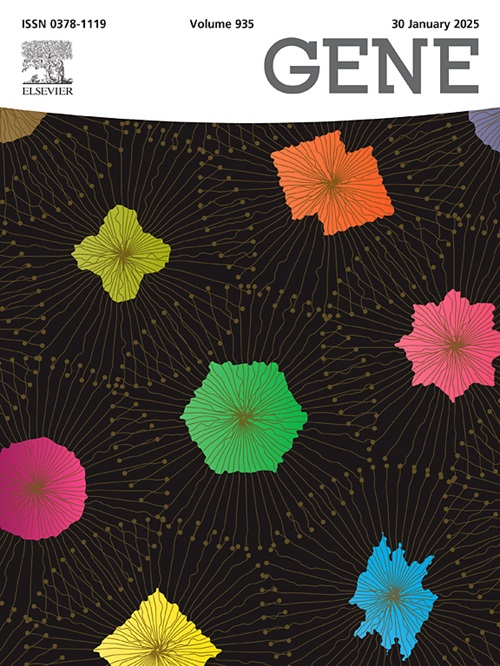Expression patterns of PIK3CA and PTEN in cancer and type 2 diabetes mellitus
IF 2.4
3区 生物学
Q2 GENETICS & HEREDITY
引用次数: 0
Abstract
Type 2 diabetes mellitus (T2DM) and cancer share key metabolic and molecular pathways, including the PI3K/PTEN/AKT signaling cascade, which plays a central role in glucose metabolism and cell proliferation. This study aimed to evaluate the expression levels of PIK3CA and PTEN genes in individuals with cancer and T2DM, to explore their potential role in cancer progression among diabetic patients. A total of 115 individuals were categorized into four groups: healthy controls (C, n = 27), patients with T2DM (SD, n = 30), cancer patients (Ca, n = 28), and patients with both cancer and diabetes (CD, n = 30). Gene expression was analyzed by real-time PCR, and biochemical parameters were assessed. Statistical analysis included the Kruskal–Wallis and Spearman correlation tests. The expression of the PIK3CA gene was significantly higher in the Ca group compared to the other groups (p = 0.0435), with 77 % of cancer patients exhibiting overexpression. In contrast, only 37 % of CD patients showed PIK3CA overexpression. The expression of the PTEN gene was significantly lower in the SD and CD groups compared to the Ca group (p < 0.05). No significant differences in PIK3CA expression were observed among different cancer types. These findings suggest that PIK3CA and PTEN may serve as potential peripheral indicators of systemic alterations in the PI3K/PTEN pathway in cancer and T2DM, highlighting the need for further research, including tissue validation and biomarker performance assessment.
PIK3CA和PTEN在癌症和2型糖尿病中的表达模式
2型糖尿病(T2DM)和癌症共享关键的代谢和分子通路,包括PI3K/PTEN/AKT信号级联,在葡萄糖代谢和细胞增殖中起核心作用。本研究旨在评估PIK3CA和PTEN基因在癌症和T2DM患者中的表达水平,探讨它们在糖尿病患者癌症进展中的潜在作用。115人被分为四组:健康对照组(C, n = 27),T2DM患者(SD, n = 30),癌症患者(Ca, n = 28),癌症和糖尿病合并患者(CD, n = 30)。采用实时荧光定量PCR分析基因表达,并评估生化指标。统计分析包括Kruskal-Wallis和Spearman相关检验。与其他组相比,Ca组PIK3CA基因的表达显著升高(p = 0.0435),77% %的癌症患者表现出过表达。相比之下,只有37% %的CD患者表现出PIK3CA过表达。SD和CD组PTEN基因的表达量显著低于Ca组(p
本文章由计算机程序翻译,如有差异,请以英文原文为准。
求助全文
约1分钟内获得全文
求助全文
来源期刊

Gene
生物-遗传学
CiteScore
6.10
自引率
2.90%
发文量
718
审稿时长
42 days
期刊介绍:
Gene publishes papers that focus on the regulation, expression, function and evolution of genes in all biological contexts, including all prokaryotic and eukaryotic organisms, as well as viruses.
 求助内容:
求助内容: 应助结果提醒方式:
应助结果提醒方式:


